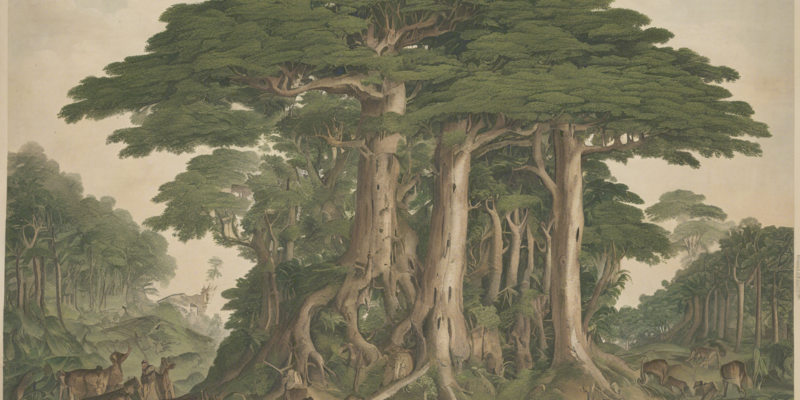As humans, we are inherently drawn to the beauty and majesty of forests. The lush green canopies, the vibrant wildlife, and the sense of peace and tranquility that forests offer have captivated our hearts and minds for centuries. Among the various types of forests that grace our planet, World Heritage Forests stand out as unique and invaluable treasures. These forests have been recognized by UNESCO for their outstanding universal value and are protected to ensure their preservation for future generations to enjoy.
What are World Heritage Forests?
World Heritage Forests are natural forests or woodlands that have been designated as UNESCO World Heritage Sites due to their exceptional importance to humanity. These forests are deemed to possess outstanding universal value and are protected under international treaties to ensure their conservation. They represent some of the most ecologically significant and biologically diverse ecosystems on Earth, providing essential habitats for numerous plant and animal species.
The Importance of World Heritage Forests
World Heritage Forests play a crucial role in maintaining the health of our planet. They act as carbon sinks, absorbing and storing vast amounts of carbon dioxide from the atmosphere, which helps mitigate climate change. These forests also provide vital ecosystem services, such as regulating water cycles, preventing soil erosion, and supporting biodiversity. Additionally, they hold significant cultural and spiritual value for indigenous communities around the world, serving as sacred sites and sources of traditional knowledge.
Iconic World Heritage Forests
1. Daintree Rainforest, Australia
- Located in Queensland, the Daintree Rainforest is one of the oldest rainforests on Earth, dating back over 135 million years.
- It is home to an incredible diversity of plant and animal species, including unique and endangered wildlife like the cassowary and tree kangaroo.
2. Tongass National Forest, USA
- Situated in Alaska, the Tongass National Forest is the largest national forest in the United States and the world’s largest intact temperate rainforest.
- It harbors iconic species such as the bald eagle, brown bear, and Pacific salmon.
3. Sundarbans Mangrove Forest, Bangladesh and India
- The Sundarbans Mangrove Forest is the largest tidal halophytic mangrove forest in the world, known for its rich biodiversity and unique ecosystem.
- It is home to the Bengal tiger, saltwater crocodile, and various bird species.
Threats to World Heritage Forests
Despite their immense ecological and cultural value, World Heritage Forests face numerous threats that jeopardize their integrity and survival. Deforestation, illegal logging, climate change, and habitat destruction are among the primary challenges that these forests are confronted with. Human activities such as agriculture, mining, infrastructure development, and unsustainable tourism pose significant risks to the delicate balance of these ecosystems.
Conservation Efforts and Sustainable Practices
To safeguard World Heritage Forests and promote their sustainable management, concerted conservation efforts and innovative practices are essential. Governments, NGOs, local communities, and international organizations must collaborate to implement strategies that focus on ecological restoration, community engagement, law enforcement, research, and education. Sustainable practices such as ecotourism, agroforestry, reforestation, and biodiversity monitoring play a vital role in preserving the unique biodiversity and ecological functions of these forests while supporting the well-being of local communities.
Frequently Asked Questions (FAQs)
1. Why are World Heritage Forests important?
- World Heritage Forests are important due to their exceptional ecological significance, biodiversity value, role in climate regulation, cultural heritage, and provision of ecosystem services essential for human well-being.
2. How many World Heritage Forests are there globally?
- As of [current year], there are [number] World Heritage Forests spread across [number] countries around the world, representing diverse ecosystems and bioregions.
3. What criteria determine the selection of World Heritage Forests?
- The selection of World Heritage Forests is based on stringent criteria established by UNESCO, including exceptional natural beauty, ecological significance, biodiversity value, and cultural importance.
4. How can individuals contribute to the conservation of World Heritage Forests?
- Individuals can contribute to the conservation of World Heritage Forests by supporting sustainable practices, avoiding products linked to deforestation, raising awareness, volunteering for conservation projects, and donating to reputable organizations.
5. What are some successful conservation initiatives in World Heritage Forests?
- Successful conservation initiatives in World Heritage Forests include community-based conservation projects, habitat restoration programs, sustainable forest management practices, wildlife protection measures, and international collaborations for transboundary conservation.
In conclusion, World Heritage Forests are invaluable treasures that deserve our utmost care and protection. By recognizing the importance of these forests, understanding the threats they face, and actively engaging in conservation efforts, we can ensure that these remarkable ecosystems continue to thrive and inspire generations to come. Let us cherish and safeguard these natural wonders for the benefit of all life on Earth.

